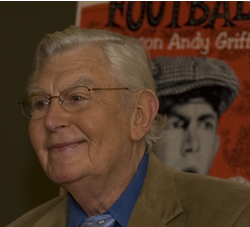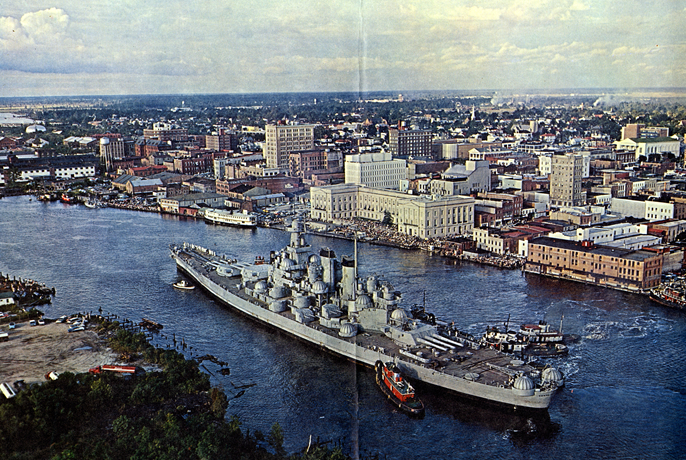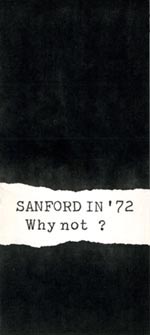
This Month in North Carolina History
On November 13, 1997, the first major casino in North Carolina opened on the reservation of the Eastern Band of Cherokee Indians in the western part of the state. The opening was the culmination of nearly a decade’s worth of negotiation and compromise between tribal, state, and federal officials.
In 1988, the U.S. Congress passed the Indian Gambling Regulatory Act, which allowed federally-recognized tribes to open casinos on tribal property, but limited the casino offerings to games that were already allowed under state law. This opened the door for the Cherokee to build a casino in western North Carolina.
Tribal Chief Jonathan “Ed” Taylor worked closely with Governor Jim Hunt to develop a plan for a casino that would meet state laws and satisfy local and tribal concerns. Some Cherokee leaders were not enthusiastic about the idea, most notably the tribe’s spiritual leader, Walker Calhoun, who said in 1995 that gambling would be the Cherokee’s damnation. Residents of the surrounding area were also concerned about the type of visitors that a casino would draw, and feared that the presence of a large group of gamblers would discourage the “tried and true” family vacationers who had been coming to the area for decades.
In the early 1990s, the tribe opened a small casino that offered electronic versions of bingo and poker, as well as pull-tab machines that offered cash prizes. Challenged by the Asheville U.S. Attorney, who argued that the tribe was offering a form of gambling that was not legal elsewhere in the state, the casino was forced to remove everything but bingo.
Worried that such a limited offering would not draw the crowds they hoped to see, tribal leaders continued negotiations with Governor Hunt, and finally arrived at an agreement under which the casino would be able to offer electronic games that required “skill or dexterity” and with a maximum jackpot of $25,000. Table games, or games featuring live dealers, were prohibited. Alcohol would also be prohibited in the casino, in accordance with existing reservation laws. As part of the agreement, one half of the casino earnings were to be divided among all members of the tribe, distributed as an annual bonus.
On opening day, the casino’s first visitors waited in line outside, in steady rain, for hours just to get inside of the casino. As the day went on, the crowds grew so large that casino officials made a public appeal for people to stay away. The casino’s popularity has remained steady, earning $155 million in annual payouts in 2004, which provided $6,000-dollar annual bonuses to every member of the tribe.
Sources
Barrett, Mark. “Gambling to change Cherokee’s image: Will it increase prosperity, or drive away traditional tourists?” Asheville Citizen-Times, 28 August 1994.
Buggs, Shannon. “Betting with reservations” The News & Observer, 19 October 1997.
Horan, Jack. “Miss. firm to build N.C. casino.” The Charlotte Observer, 7 January 1995.
Nowell, Paul. “Casino at heart of conflict.” The News & Observer, 28 March 2004.
Voorhis, Dan and Bob Scott. “Cherokee ordered to remove video gaming machines.”Asheville Citizen-Times, 20 July 1994.
Williams, Bob. “Cherokee casino opens” The News & Observer, 14 November 1997.
Williams, Bob. “Tribe hits jackpot with new casino.” The News & Observer, 13 April 1998.
Wilson, Trish. “Gambling the reservation.” The News & Observer, 12 March 1995.








